The glass is cool thickness on the pads of my fingertips. The pane is solid, sturdy and slightly vibrating. The mechanics of turning a river into a highway are humming through the clear divide.
I’m looking through a window at step 18 of 21 in the fish ladder along Ballard Locks in Seattle, Washington. The locks, there are two at Ballard, move boats into and out of Puget Sound. They raise water up and drain it down by as much as 26 feet multiple times a day. They separate freshwater and saltwater, trapping sea life in transition between the two liquids.
“It’s very important for juvenile salmon to not get to saltwater too soon,” says Jay Wells, Ballard Locks program manager for 20 years.
“In a normal system, they’ve got a lot of time to adapt. Here they don’t have that. If they’re going downstream and they’re not ready for saltwater, here they go anyway. It’s a shock to their system.”
The Lock
At 102 years old, Ballard is the busiest lock in the nation. It moves nearly 50,000 vessels through its canal every year. Locks make boat passage possible between water bodies of varying levels. Think of it as the trench you used to build on the beach as a kid. A level trench is a moat around your sandcastle. An angled trench near the wave line washes water up and down the trench based on tide.
The motivation for Ballard was canal connection between Lake Union, Lake Washington, Salmon Bay and Puget Sound. It positioned Seattle as the country’s most popular port for moving products by waterway in the early 1900s. About 300 men built Ballard around the same time as Panama Canal construction. They moved 4 million cubic yards of soil (400,000 dump truck loads). They filled a saltwater inlet with freshwater and they lowered Lake Washington by nine feet. As a federally funded project, U.S. Army Corps of Engineers (USACE) completed the canal in 1917. The locks were free to use then and they still are today, but they come at a cost.
“This should be full of Chinook right now,” Wells says. “This is what record lows look like.”
The Loss
Fish don’t fair as well in locks as boats do. The raising and lowering of levels creates multiple obstacles. Salmon migrating to and from the Pacific Ocean struggle with these man-made wonders during their naturally-born navigation. That’s why there’s a fish ladder along Ballard to help salmon pass. USACE constructed windows under the locks allowing visitors to watch salmon use the ladder. The window I’m standing at looks in on steps of concrete covered with algae, like green slime on the bottom of your kid’s aquarium. The steps help salmon pass the locks in gradual succession. Jump a step, rest, swim, jump the next step, repeat.
I want to ask the engineer who added the windows what his motivation was. Did he see fish? Because I don’t. The ladder doesn’t host fin now, just sparse chunks of seaweed. There’s no salmon on the other side of the glass.
“We apologize for no salmon,” says Rich Deline, Corps. Foundation founding director. “This is not a circus. We don’t know when they’re going to perform.”
The ladder should be piled with Chinook, some of them with sincere intentions of making it inland. A few rare ocean migrants are even destined for Idaho’s Salmon River watershed more than 800 miles away. They’re expected to spawn and then die naturally. But most die before reaching their redd (spawning bed).

Chinook salmon are protected by the Endangered Species Act. As a nation, we’ve stopped the disappearance of several endangered species and righted humanity’s wrong many times with this act. We’ve done it for bald eagles. We’re doing it for grizzly bears. The next line here should be, we will do it for salmon. As I silently stare at the empty water on the other side of the window, I’m doubtful. I’m also mad. We’re letting countless ecosystems down, from the ocean to Idaho, if salmon go extinct.
“It’s a very sad situation,” Wells says, as he explains the void to the crowd behind me. “Things are going to hell quickly and we’re part of that.”
The Low
I’ve seen one Chinook protecting new life on its deathbed in Idaho’s Yankee Fork of the Salmon River. One. I’m fortunate because most people will never even see one.
Watching a Chinook stand guard over its spawn is unforgettable and unsettling. It sticks with you and that’s why I wanted to see where the unrelenting journey begins. I wondered what the haggard fish looked like before being shredded by hundreds of miles of resistance.
Locks are just one of the challenges. There are dams, diversions, hot ocean, hungry seals, anglers, orcas and pollution. The influence of many is tugging hard on salmon. Less than 18,000 sockeye passed the locks earlier this summer, the lowest since records started in 1972 with 242,359. The low is painfully obvious in Chinook too. Only a few thousand have staggered through since late July. The count continues through September.

August is peak season for Chinook and the water through the window is empty. The situation is so dire, the Corp. recently installed TV screens on the wall above the windows. Footage of swimming salmon plays on a loop above my head telling me over and over I’m too late. What I want to see in real life with my own eyes isn’t here. Instead, it’s on a screen that’s playing footage shot before the population tanked.
“We’ve got to pay attention,” Wells says. “The time to sit around is over. We’ve got to do something.”
The Legacy
Tom Uniack’s daughter is doing something. He’s Washington Wild’s executive director and he’s speaking at a brewery event hosted by Theodore Roosevelt Conservation Partnership (TRCP) near the locks. Washington has more than 400 breweries needing clean water. Sour flow for salmon is also bad water for beer. Uniack tells me his daughter stopped eating salmon.
“She’s 10,” he says. “She doesn’t understand all the nuances of the issue, but she knows orcas eat Chinook salmon. They don’t have enough to eat so she’s not eating Chinook anymore.”
Other people older than 10 are doing the same, but that’s not the fix. Cracking the window of pain by turning my fingers into a fist isn’t the fix either. I don’t touch Chinook in my home state of Idaho. Now I don’t get to see them try to make it to Idaho either. Washington’s water is nearly void of salmon when migration should be moving in mass. The orcas know it. We know it. Now my kids will have to know it too.
I don’t want to tell my boys about my disappointing day at the window. I want to tell my parents. Better yet, my grandparents and ideally my great-grandparents. Did they know, in their ever-brilliant engineering minds, that Western expansion would promote wild extinction? Did they know their future would see a legacy of loss?
So many adults say they want to save our natural resources for future generations. When they say it, do they realize they’re someone’s future too?
I’m someone’s future and I want relations past to know they didn’t save salmon for me. But all the telling in the world won’t reach them. They’ve disappeared, dead like the water through the window.




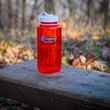
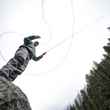
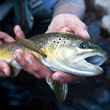





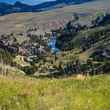



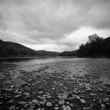
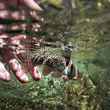



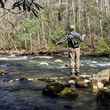



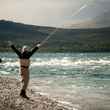
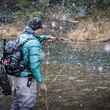
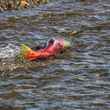
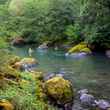
Comments
Charlie@HockeyBias.com replied on Permalink
Mat I suggest to all, read the new book 'Stronghold' by Tucker Malarkey about the Wild Salmon Center. Support the WSC if you are able. There are no silver bullets, but they are doing very important work to protect the world's remaining salmon.
Pages